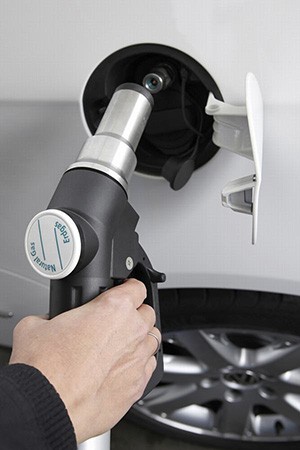

Cars powered by CNG emit fewer fine particles and less CO2 than petrol or diesel cars. CNG is also cheaper than these fuels.
But for a truly sustainable approach, you can also opt for an electric car.
| There are currently more than 20 million vehicles in the world running on natural gas. In Belgium, around a 22,500 cars run already on CNG. What’s more, in early 2021, CNG pumps have appeared in over 147 of the country’s service stations. |
CNG (Compressed Natural Gas), is the same as the gas used to heat our houses. Natural gas is a resource that is very widely available in the world and is less polluting than petrol or diesel.

CNG has several advantages over LPG:
These days, many car manufacturers are offering CNG cars in an increasing range of models. CNG is stored in gas bottles which are fitted into the car’s chassis.
You will pay on average €500 to €8,000 more than the same petrol or diesel model. They usually come with a dual fuel tank. This enables them to switch to petrol if the CNG tank is empty.
Depending on the model, you can drive 300 to 800 kilometres on natural gas. The total range of CNG cars with dual fuel tanks can sometimes be over 1,000 km.
Find here all car makes and models running on CNG (in French)
Conversion of a petrol vehicle is possible, but – depending on the model – may involve a loss of boot space. This is however not done very often and can cost around €4,000 to €6,000 (not counting tax and other advantages).
Converting a diesel car is possible, though difficult and very expensive: over € 10,000.
View the list of recognized CNG fitters (in French)
The number of CNG fuel stations has grown considerably in recent years. Currently there are some 147 CNG filling-stations in Belgium. With the growing success of the CNG car, many new fuel stations will surely follow.
In the Brussels Region, two filling stations are available: Anderlecht and Auderghem, as well as filling stations in the Flemish periphery. There is a motorway filling station at Heverlee on the E40.
View the list of all existing and planned CNG fuel stations (in French)
In addition to these, our country also has two L-CNG stations, which distribute both LNG (Liquefied Natural Gas and CNG.
It is possible to get a 'slow fill' gas filling station installed at home. This installation connects to the domestic gas network and lets you fill up the car, but it does take several hours. It’s best to do it during the night, in the same way as electric cars.

(1) Study reviewed by Mobi and Marc Pecqueur (Thomas More) and validated by Ghent University.
(2) CREG study on the cost-effectiveness of natural gas (CNG) used as fuel in cars
Calculate your benefits (in French)
More about environmental impact of CNG cars (in French)
All vehicles powered by CNG must bear a CNG label in regulated format on their rear face.
The usual inspection of the car (first after 4 years and then annually) must be carried out by a GOCA inspection centre. This is the same procedure as for diesel and petrol cars.During the vehicle inspection, a brief CNG check (leak detection) will take place.
In addition, there is a 4-yearly inspection of the CNG tank. At the moment, only a few companies are authorized to do this (further information available from your fitter or garage). More and more automotive fitters/mechanics are following the Educam training. Eventually, therefore, the specialist dealers themselves will be authorized to carry out these checks.
Show all CNG fuel stations in Belgium on a bigger map
For a list of all the planned CNG fuel stations, go to ngva.be
More information on natural gas-fueled cars is available here.
(See also: 'What different types of electric car are available?')
Subscribe to our newsletter and stay informed about energyfacts.